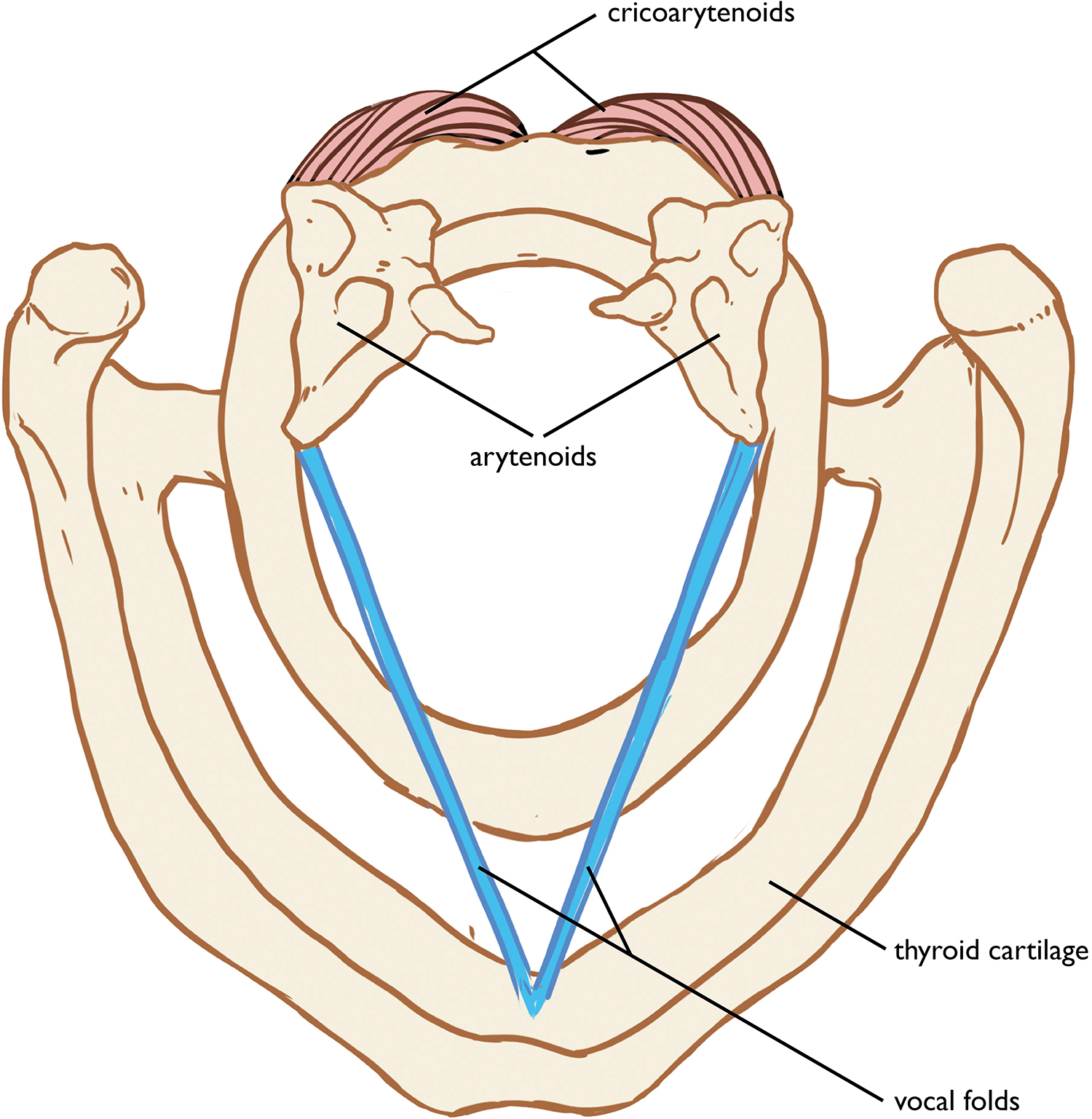
As a graduate student, I failed to grasp laryngeal anatomy in any practically applicable sense. I was able to learn basic terminology and concepts well enough to fulfill course requirements and pass exams but not well enough for them to inform the way I taught. It was only some years after I completed my doctorate and decided to pursue certification as a fitness trainer that I learned functional anatomy in a way that informed and advanced my pedagogy.
My work as a trainer required that I understand the basics of the human movement system in order to apply this information to teach people how to become stronger, more flexible, and better coordinated. Through observing ankles, hips, and shoulders in action, day in and day out, I became adept at recognizing dysfunctional movement patterns and designing programs to help my clients establish healthier biomechanics.
As I became more skillful at analyzing and working with the external movements of physical exercise, I began to more deeply comprehend the complex internal movements that occur in and around the larynx when we sing.
The education I received while preparing for fitness certification also helped me realize why vocal anatomy can be so difficult to grasp for even the most dedicated student. I imagine that music majors seldom study biology beyond a high school level, and even college-level biology textbooks do not cover human anatomy and movement. This means that our very first exposure to anatomical vocabulary and concepts such as flexion, extension, adduction, origin and attachment points of muscles, and so on, takes place in relation to extraordinarily complex structures like the larynx or diaphragm, viewed with little or no reference to the overall musculoskeletal system. Attempting to thus master such information is like trying to start a video game at the expert level, without even being offered a diagram of the controller. But at least when you’re playing a video game there is a chance that figuring it all out will afford you some pleasure. By contrast, the anatomical information in your vocal pedagogy texts may have only minimal overlap with the language your teacher employs in the studio, and therefore no discernable application for your technique. And voice students cannot be expected to devote valuable time to anything that doesn’t promise to help them sing better, especially something as esoteric as anatomy.
An understanding of laryngeal function can indeed help you learn to sing better, provided that you have the means to relate that understanding to your singing practice with the same directness with which a trainer applies knee kinematics to promote good squat form. In this chapter it is my aim to introduce the structures comprising laryngeal anatomy within the context of their roles in creating vibration, varying pitch, and modulating registration, as well as to offer strategies for optimizing their function.
Note
Symbols appearing in brackets are drawn from the International Phonetic Alphabet. IPA is the pronunciation guide in common use by classical singers that notates the sounds of language.
The vocal folds are composed of mucous membrane and serve as the vibrator for the vocal instrument. They attach in the front to a single point located inside the thyroid cartilage just below the Adam’s apple and at the back to the arytenoid cartilages. The posterior cricoarytenoid muscles abduct (pull apart) the arytenoid cartilages, causing the vocal folds to open as shown in figure 3.1. The lateral cricoarytenoid muscles adduct (draw together) the arytenoid cartilages, causing the vocal folds to approximate as shown in figure 3.2.

Figure 3.1 Vocal folds abducted. Sandy Escobar.
The aperture between the vocal folds is also called the glottis. The two primary roles of glottal closure in human anatomy are preventing foreign objects (such as food) from entering the trachea, and stabilizing the torso. When the glottis is tightly closed such that no air can escape, the resulting pressure stabilization within the thoracic and abdominal cavities facilitates lifting heavy objects; it also aids in defecation. While the glottis originally evolved to accomplish such activities, now that it has further evolved to become capable of nuanced musical vibration it is my recommendation that you employ other muscle groups to generate the internal stability needed for lifting and defecating.
As discussed in chapter 2, vocal fold vibration is stimulated by the release of the breath in accordance with the Bernoulli principle. When the aperture between the vocal folds is sufficiently narrow and the vocal folds themselves are sufficiently supple, the differential in the air pressure below and above causes them to alternately approximate and come apart in a regular vibratory pattern.
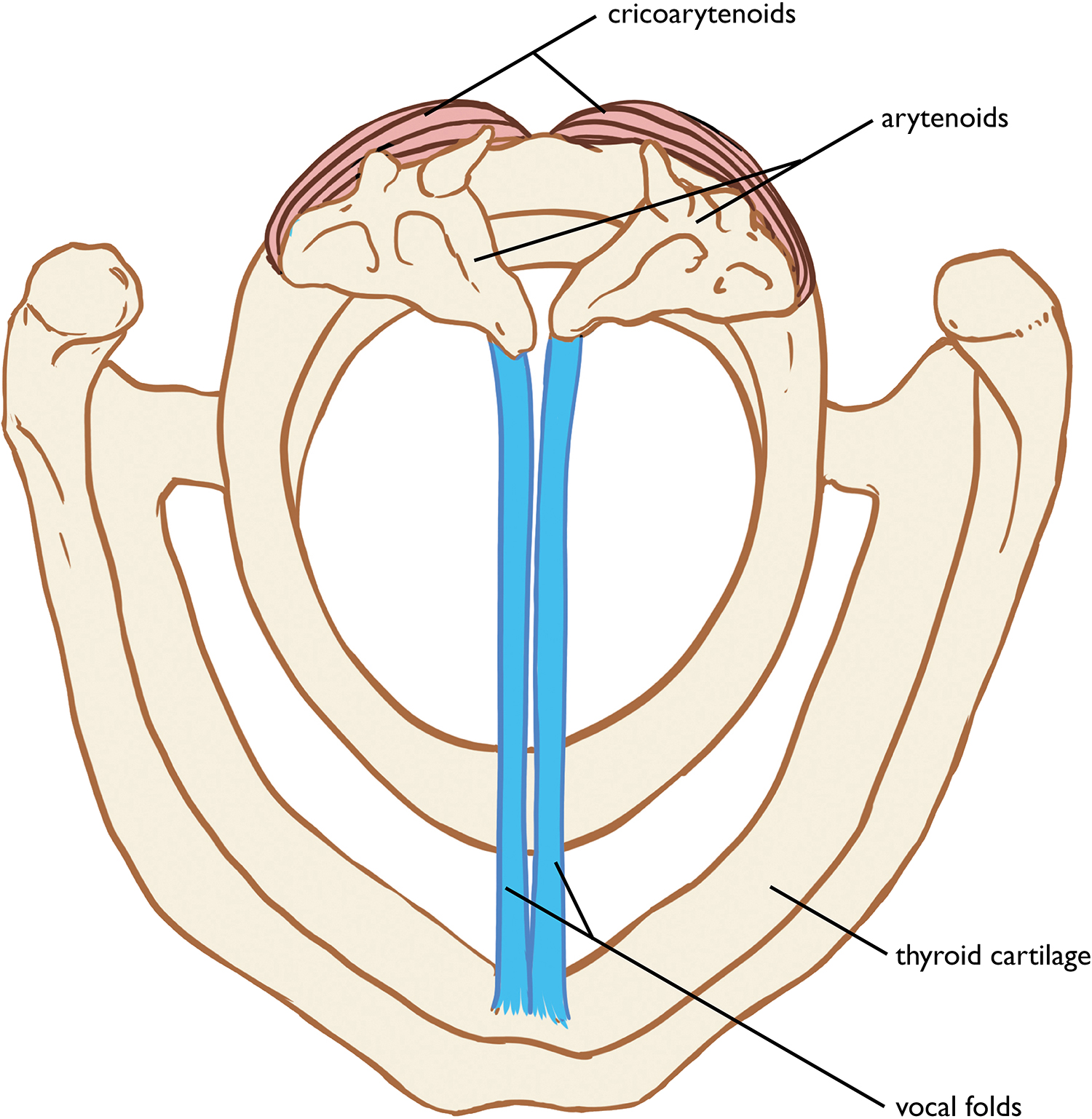
Figure 3.2 Vocal folds adducted. Sandy Escobar.
The vocal folds are extraordinarily malleable structures, capable of varying length and thickness. Elongating the vocal folds results in the production of higher pitches; shortening them lowers the pitch. Thickening the vocal folds results in heavier registration, while thinning them lightens registration.
The muscles that modulate pitch and registration are the thyroarytenoid muscles (figures 3.3 and 3.4) and the cricothyroid muscles (figure 3.5).
The thyroarytenoids are the muscular components of the vocal folds themselves. When they contract, as shown in figure 3.4, they shorten and thicken the vocal folds, lowering pitch and increasing the weight of registration.
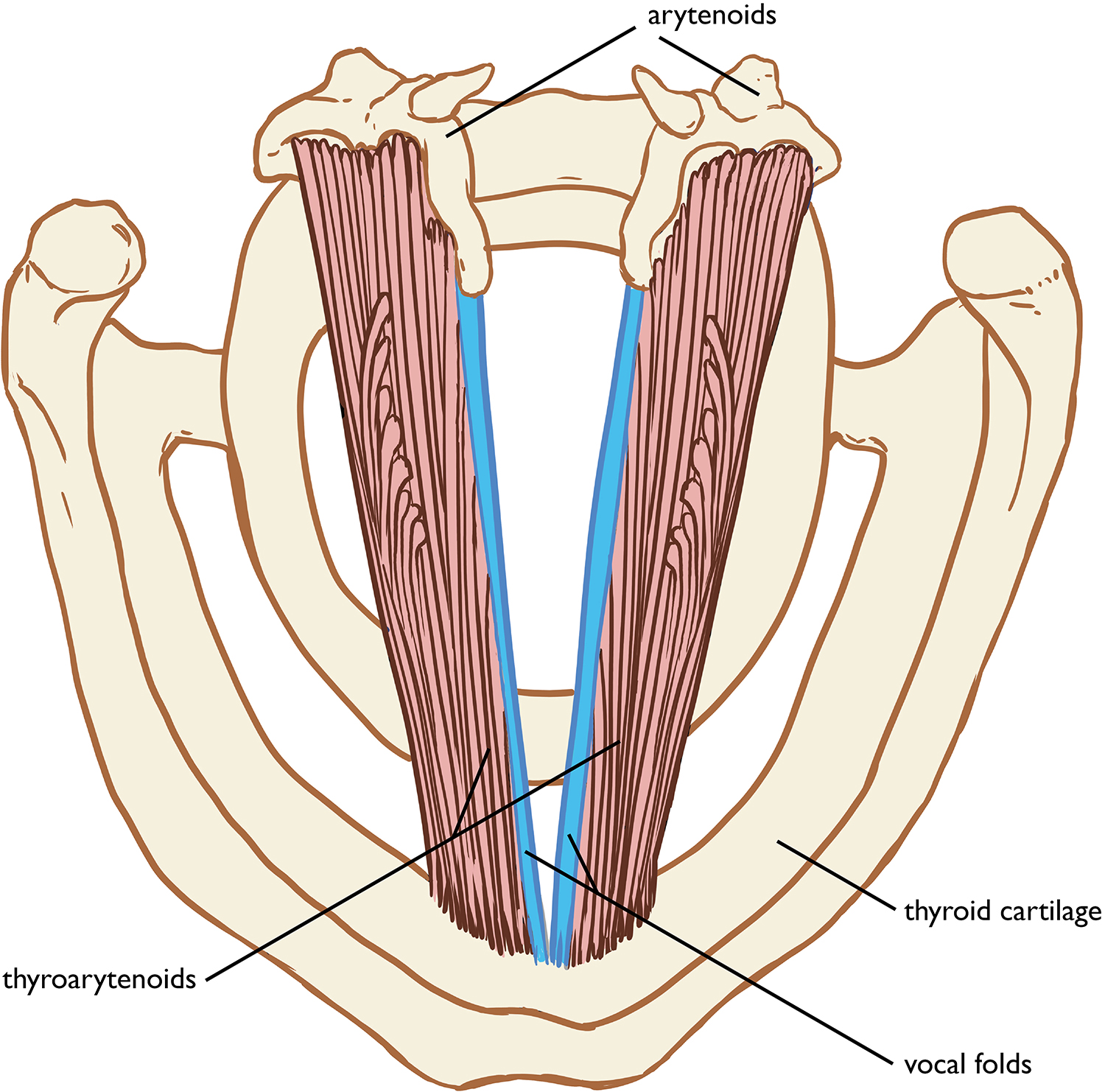
Figure 3.3 Thyroarytenoids. Sandy Escobar.
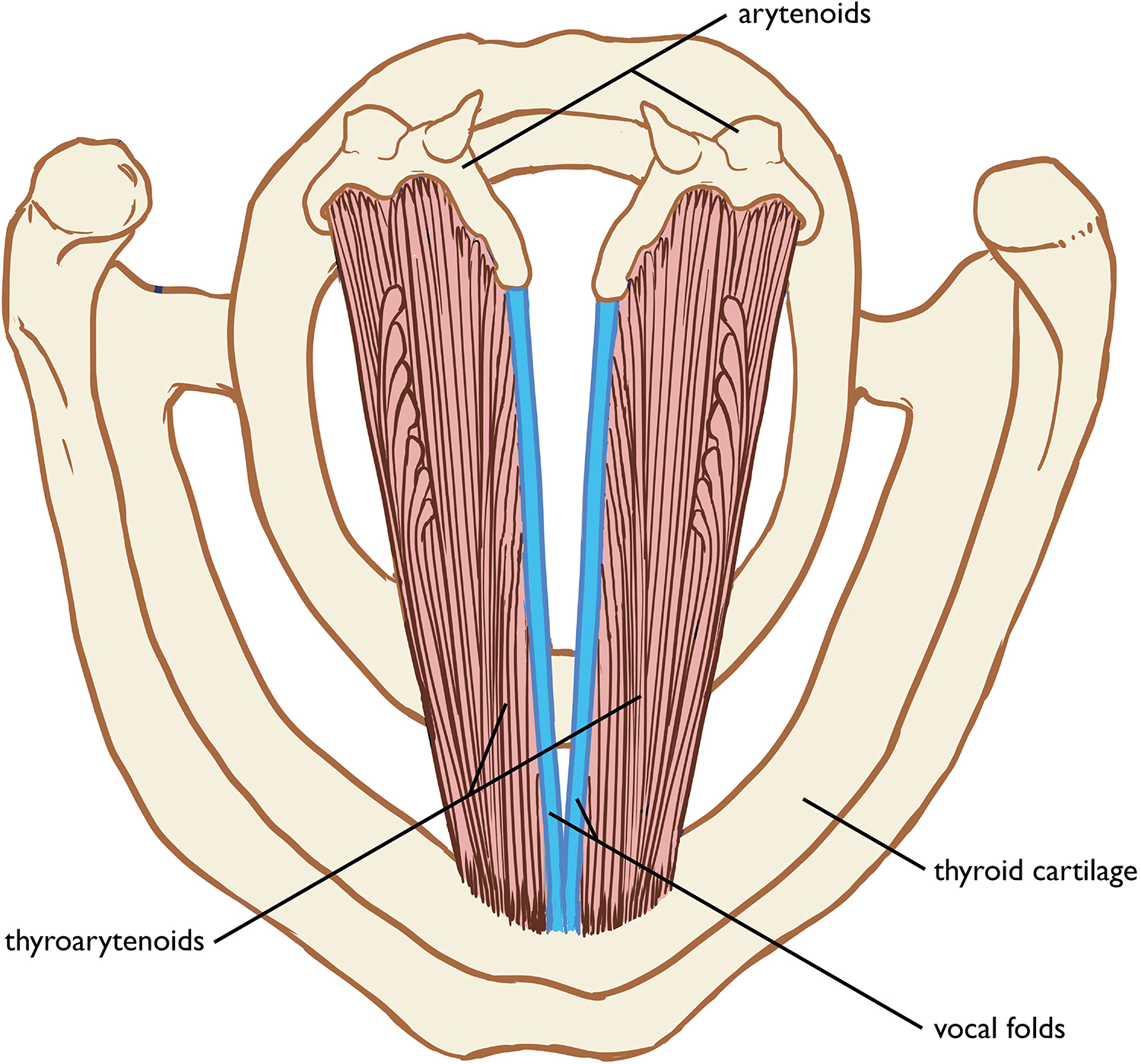
Figure 3.4 Action of the thyroarytenoids. Sandy Escobar.
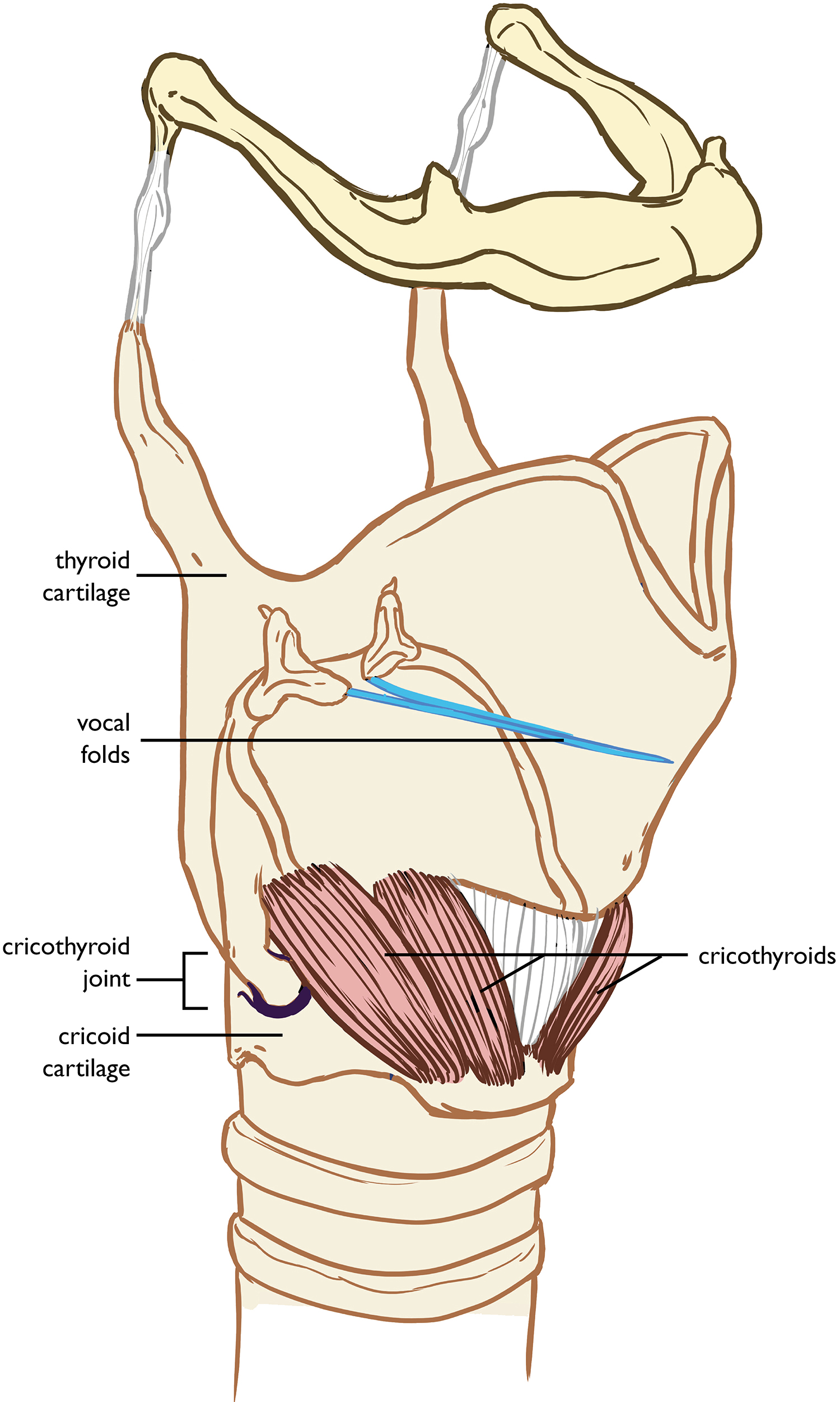
Figure 3.5 Cricothyroids. Sandy Escobar.
Figure 3.6 shows the action of the cricothyroid muscles, which is a little more difficult to visualize than the action of the thyroarytenoids because the cricothyroids are not attached to the vocal folds and can only influence their length and thickness indirectly. The cricothyroids originate on the front and sides of the cricoid cartilage and attach at an angle to the thyroid cartilage. When they contract, they rotate the thyroid cartilage forward at the cricothyroid joints, as shown in figure 3.6. This increases the distance between the vocal folds’ points of attachment to the thyroid cartilage and the arytenoid cartilages, causing the vocal folds to elongate and narrow, raising pitch and lightening registration.
The combined activity of the thyroarytenoid and cricothyroid muscles varies the length and thickness of the vocal folds, modulating pitch and registration.

Figure 3.6 Action of the cricothyroids. Sandy Escobar.
Muscle groups function in tandem to generate and stabilize movement around each joint in the body and throughout the skeletomuscular system. For example, the hamstrings and quadriceps work together to produce knee movement. Your hamstrings are the major muscles located in the back of your thigh, between your knee and buttocks, while the quadriceps are the major muscles in the front. When your hamstrings contract and your quadriceps lengthen, this action serves to bend, or flex, your knee; when your quadriceps contract and your hamstrings lengthen, this produces the opposite effect on the knee, causing it to straighten, or extend. The hamstrings and quadriceps collaborate to control the rate of movement and degree of force production around your knee. This partnership between such opposing muscle groups is called an agonist/antagonist relationship. Bend your knee in a variety of positions and at different speeds, and observe its movement when walking or running. Because you have a great deal of experience flexing and extending your knees, these movements are smooth and easy for you to control.
Your thyroarytenoid and cricothyroid muscles share a partnership similar to the one between your hamstrings and quadriceps. The thyroarytenoids create thickness by shortening and thickening the vocal folds, while the cricothyroids oppose their movements to create narrowness and length. Together, they are capable of changing the length and thickness of your vocal folds in a way that can potentially yield smooth, stable, and balanced movement.
The larynx as a whole enjoys exceptional mobility because it has very few attachments to other structures; most of the structures to which it is attached are themselves fairly flexible. The larynx is suspended from the hyoid bone, which does not connect directly to any other bones; from below, the larynx is attached to the trachea by the cricotracheal ligament, which is also a relatively pliable structure. The stability of the larynx therefore depends upon balancing and coordinating the muscles capable of elevating and depressing it.
The laryngeal elevators include the digastric, stylohyoid, mylohyoid, and geniohyoid muscles, shown in figure 3.7. Their primary function is facilitating swallowing, an activity upon which our survival depends. Given the significance our laryngeal elevators hold for our well-being, it is understandable that they evolved to become quite strong—notably stronger, as it turns out, than our laryngeal depressors.
The laryngeal depressors include the sternohyoid, sternothyroid, thyrohyoid, and omohyoid, shown in figure 3.8. Their primary function is to stabilize the hyoid bone and larynx by serving as antagonists to the laryngeal elevators.
Classical voice teachers advocate cultivating a low laryngeal position because so doing will maximize the length of the supraglottal tract, optimize resonance, and facilitate good range of motion at the cricothyroid joints. As the laryngeal elevators are more numerous and stronger than the laryngeal depressors, a low laryngeal position is best achieved by alleviating tightness and over-activity in the laryngeal elevators rather than engaging the laryngeal depressors in an attempt to override this tightness and overactivity.
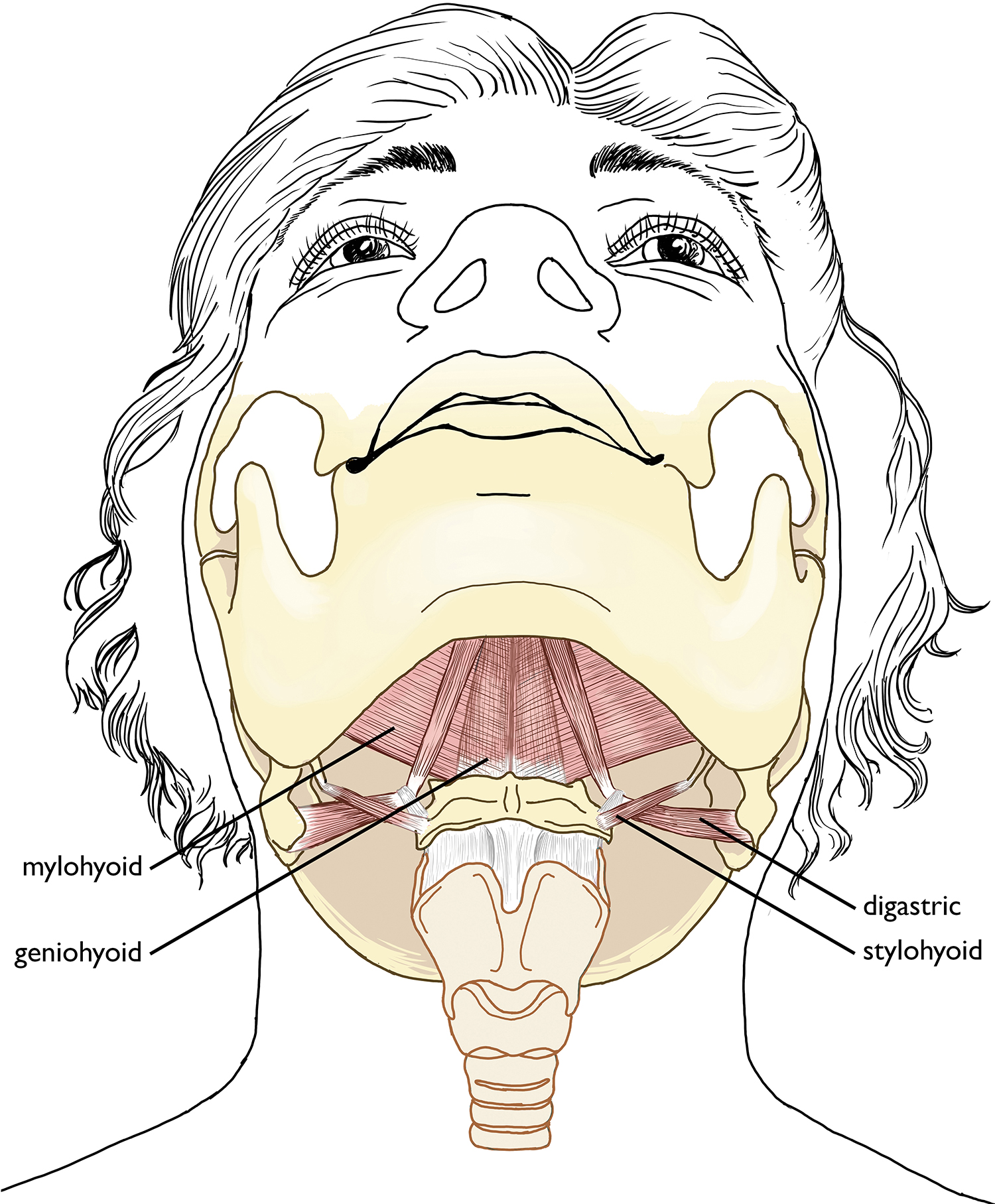
Figure 3.7 Laryngeal elevators. Sandy Escobar.
How high and how low you can sing is determined in part by genetics and in part by the range of motion you are able to access at the cricothyroid joints—the degree to which your cricothyroid muscles are able to tilt the thyroid cartilage forward and consequently lengthen your vocal folds. Optimizing range of motion at the cricothyroid joints is therefore key to extending your range upward. However, if you wish to optimize laryngeal range of motion, you may need to do more than just strengthen your cricothyroid muscles.
In addition to cricothyroid function, there are numerous factors that impact range of motion at the cricothyroid joints. Chief among them are the structures surrounding the larynx. Laryngeal movement is obstructed when it bumps into something unyielding, so all of the structures that attach to and surround your larynx must be well conditioned and coordinated for your larynx to enjoy the fullest possible range of motion.
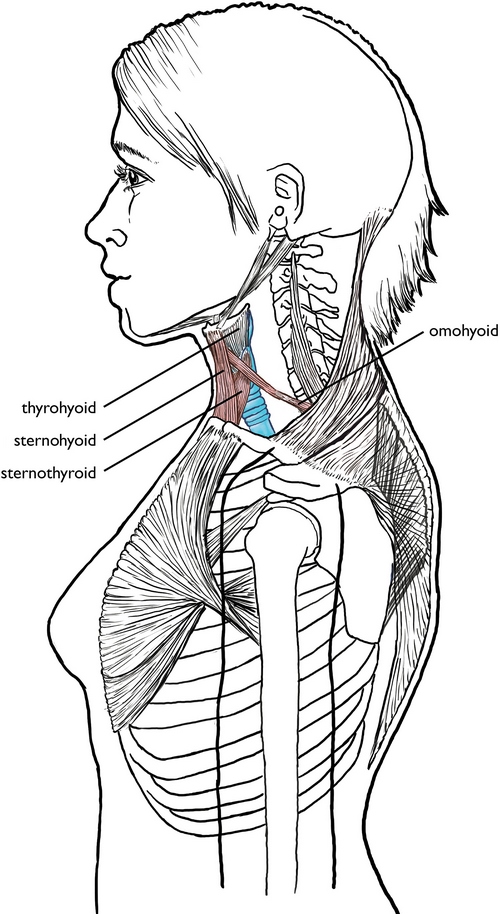
Figure 3.8 Laryngeal depressors. Sandy Escobar.
This assessment will enable you to troubleshoot for some of the issues that can limit laryngeal range of motion and identify specific areas in need of improved flexibility and coordination.
1. With your voice well warmed up, perform a slow siren on [a] (ah as in “papa”) that traverses your entire range, ascending and descending, without breaking into falsetto.
• Note the lowest and highest pitches.
2. Place one hand high on your chest and your other hand high on your abdomen.
• Repeat the siren, starting on the same low note but ascending only as high as you can without increasing engagement in your abdominal muscles or depressing your sternum.
• Note the top pitch.
3. Allow your jaw to relax and observe yourself in a mirror.
• Repeat the siren, ascending only as high as you can without opening your jaw any farther or spreading your lips sideways.
• Note the top pitch.
4. Allow your jaw to relax and gently press a thumb against the underside of your chin where your jaw meets your neck.
• Repeat the siren, ascending only as high as you can without feeling the area under your thumb stiffen and retract.
• Note the top pitch.
5. Compare the results of your initial siren with the subsequent three.
If you were capable of reaching a higher (or even a much higher) pitch on your initial siren than you were on one or all of those that followed, this indicates the presence of tensions that are impeding your laryngeal range of motion. The fact that you can access a given high note, even when it involves overriding some tension, suggests that you can become capable of tuning that note with greater freedom and less effort once the interfering tension has been identified and alleviated.
• An increase in abdominal engagement or depressing the sternum indicates an instinct to increase subglottal breath pressure in order to override whatever resistance may be impeding laryngeal range of motion. The first step in identifying the nature of this resistance is inhibiting the instinct to override it. If you are able to refrain from increasing your subglottal breath pressure, you may be able to detect what is creating the resistance and take steps to alleviate it.
• A tendency to open the jaw wide or spread the lips sideways as the pitch ascends indicates a larynx that is ascending along with the pitch and/or inadequate internal vowel height. Relaxing the laryngeal elevators, optimizing alignment of the cervical spine, and improving articulatory efficiency can facilitate a lower laryngeal position.
• A stiffening of the underside of the chin indicates an increase in tension in the base of the tongue (the hyoglossus) and/or the mylohyoid, one of the laryngeal elevators. As both of these muscles are connected to the hyoid bone, from which the larynx is suspended, overactivity in this area will compromise laryngeal mobility.
Three key ways to maximize laryngeal range of motion are relaxing the laryngeal elevators, optimizing alignment of the cervical spine, and improving articulatory efficiency.
As mentioned above, there are advantages to maintaining a low laryngeal position. A low laryngeal position facilitates good range of motion at the cricothyroid joints; it also indicates a lack of tension and overactivity in the laryngeal elevators. Conversely, the higher the larynx, the greater the potential for surrounding structures to crowd it and impede its range of motion.
The best strategy for maintaining a low larynx is to refrain from elevating it in the first place, so it is important to learn to relax the laryngeal elevators, particularly the digastric muscle. The digastric attaches the hyoid bone to the jaw in the front and the skull in the back, as shown in figure 3.10, so it is ideally positioned to hoist the larynx up. Tightness and overactivity in the digastric muscle can be effectively alleviated through massage.
• Using your fingers or a handheld massager, massage the muscles at the very top of your spine and just below your skull on both sides, as shown in figure 3.9. While massaging this area, slowly draw your chin toward your chest and then return your neck to an upright position as though nodding “yes” several times.
• While maintaining a long, relaxed position of your neck, massage the underside of your jaw-line, beginning at the sides and working toward the center of your chin.
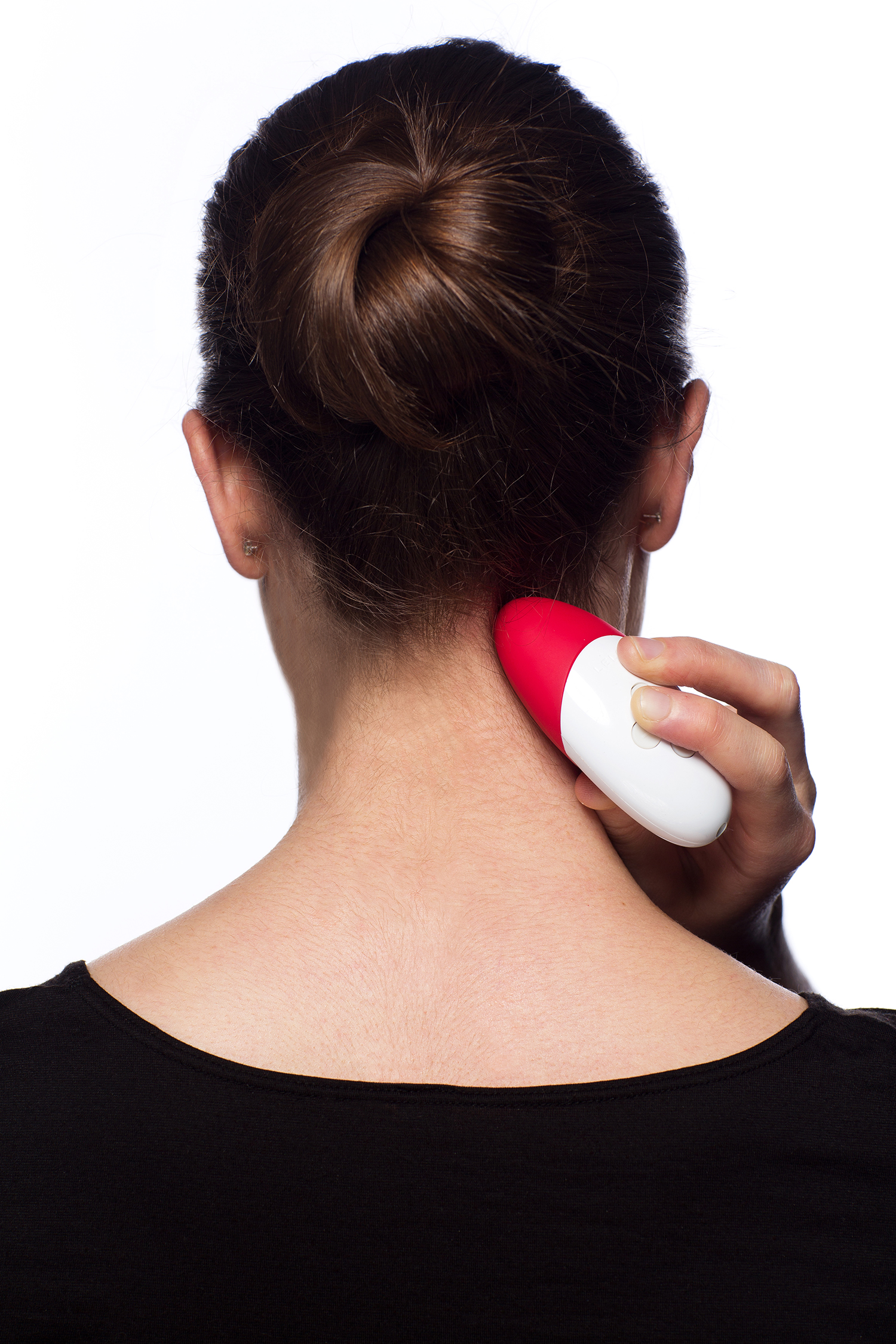
Figure 3.9 Massage for the digastric muscles. Ryan Parker.
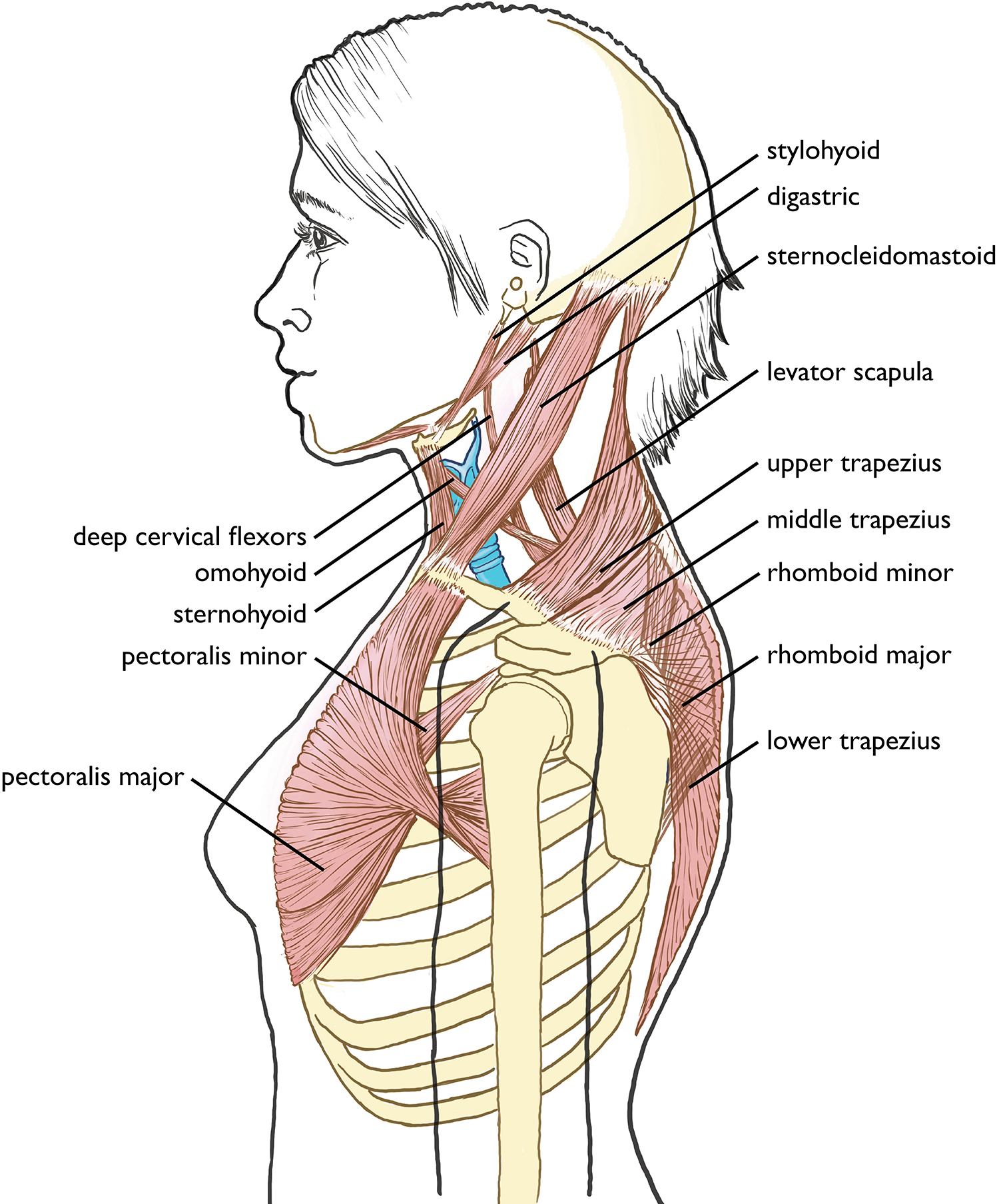
Figure 3.10 Laryngeal position in healthy upper-body alignment. Sandy Escobar.
• When both areas feel free of tension, resume massaging the muscles in the back of your neck while performing ascending and descending scales or arpeggios, encouraging your neck muscles to remain relaxed on the ascent.
As discussed in chapter 1, a very common postural distortion is an exaggerated curve of the neck, often resulting in a forward position of the head. This exaggerated curve distorts and compresses the space inside the throat and is likely to limit range of motion for the larynx.
Note the orientation of the larynx within the throat shown in figure 3.10 in comparison with its position in figure 3.11, and you will appreciate how vital good alignment is for optimal vocal function. The muscular imbalances characteristic of upper crossed syndrome change the default angle of the neck, impacting the position of all of the structures housed within it. A fitness regimen targeting upper crossed syndrome can restore the upper body to alignment more favorable to laryngeal freedom.
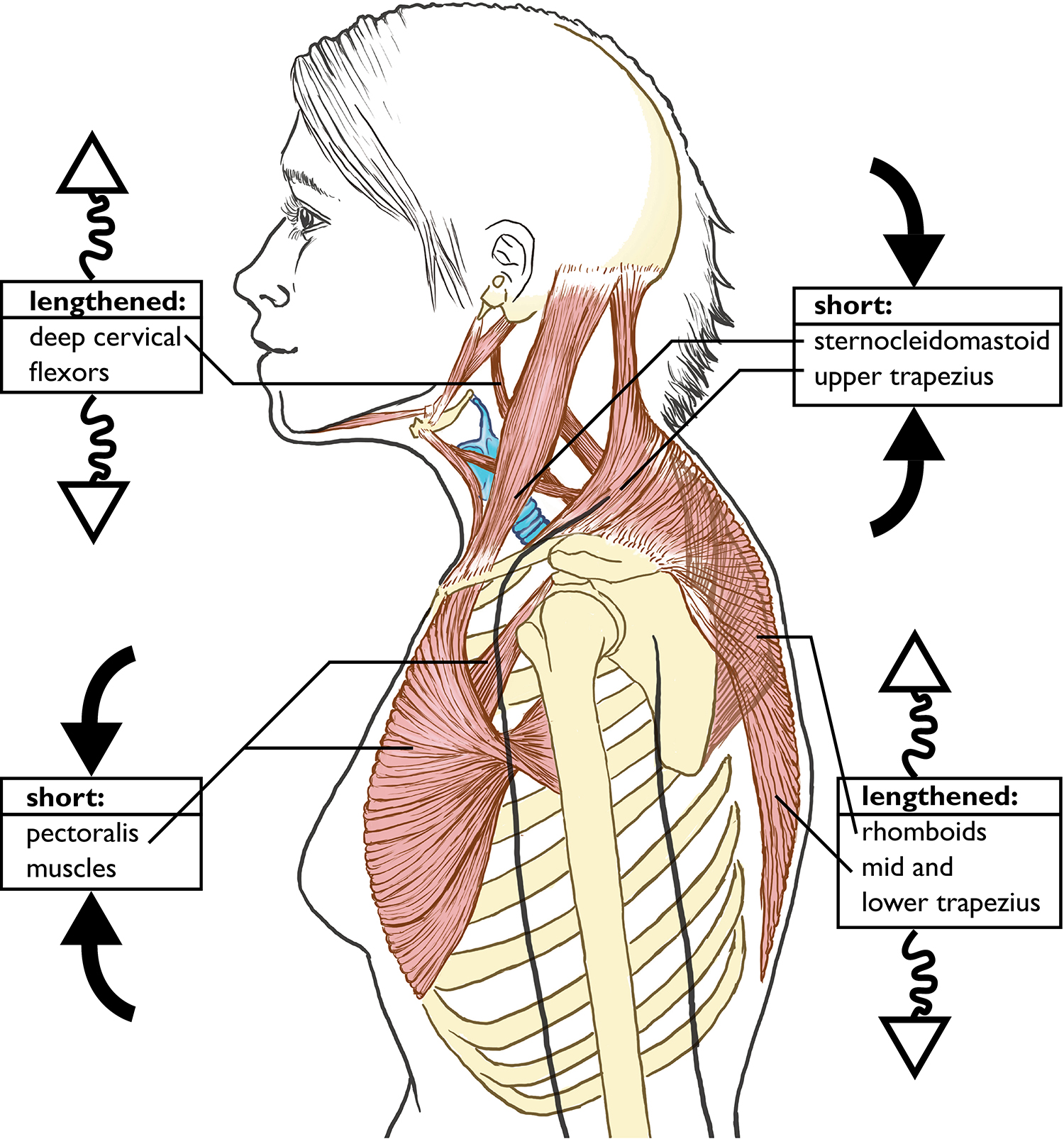
Figure 3.11 Laryngeal position in upper crossed syndrome. Sandy Escobar.
If your results from the assessments you performed in chapter 1 indicate upper crossed syndrome, this sequence of exercises drawn from chapter 6 will help improve the alignment of your cervical spine:
• self-myofascial release for the shoulders
• self-myofascial release for the latissumus dorsi
• static stretch for the pectoral muscles
• static stretch for the latissimus dorsi
• half-angel shoulder stretch
• single leg scaption
• lat pulldown
Keep in mind that while these exercises will help restore balance to the cervical spine, it is important to incorporate this sequence into a comprehensive whole-body fitness regimen, as anything that impacts the upper body will have an effect throughout the entire skeletomuscular system.
Poor articulatory coordination can impinge on laryngeal movement in a variety of ways. Retracting the tongue in order to stabilize or lower the larynx creates tension that can limit laryngeal mobility. A jaw that is held too closed or too open may distort what little internal space is available, not only for laryngeal movement but also for resonance and articulation. Inadequate expansion and vowel “height” within the oropharynx, especially on higher pitches, can lead to a compensatory elevation of the larynx and a sideways spread of the lips. Strategies for improving flexibility and coordination of the tongue, jaw, and other articulators will be covered in chapter 4.
If you experience an increased sense of effort as you approach the top of your range, it is likely that your larynx is meeting resistance as it strives to move into the proper position to tune higher pitches. Rather than exert extra effort to overcome this resistance, troubleshoot for these common problems that can impede laryngeal range of motion and take steps to alleviate them.
The thyroarytenoid and cricothyroid muscles work together to tune the vocal folds to a desired pitch by adjusting their length; in addition, these two muscles collaborate to modulate the weight of registration by adjusting vocal fold thickness.
The concept of distinct registers arose during the bel canto period. Many voice teachers continue to describe heavy vocal production as “chest voice” and light vocal production as “head voice.” While our anatomical understanding of registration remains incomplete as of this writing, it has become clear to voice scientists that the traditional terminology does not precisely align with actual vocal fold function. Pedagogues now prefer the terms “TA dominant” and “CT dominant” to describe ranges of heavy and light registration as a means of indicating whether the thyroarytenoid muscles or the cricothyroid muscles are exerting greater influence over vocal production. But given the awkwardness of such language, it is not surprising that the traditional terminology persists.
I believe that the reason it is so intuitive to conceive of the voice as divided into two registers stems from the way our voice use generally develops. We engage the voice in spoken communication for many years prior to studying singing technique, favoring the low range and heavy production that is the province of the thyroarytenoids. Thus, when we begin to explore the high range that is the province of the cricothyroids, we find these muscles to be far less developed and coordinated than the thyroarytenoids and that a balanced agonist/antagonist relationship has yet to be developed. In the absence of such a balance, it will seem that we must choose to allow one or the other of these muscles to dominate on a given pitch, deliberately develop chest voice and head voice separately, and then seek to blend them together to avoid developing a “hole” in the middle of the range.
I find it both more practical and anatomically correct to conceive of registration as a continuum rather than as a dichotomy and to view the vocal folds as capable of seamlessly evolving from thick to thin and back, just as they are capable of seamlessly evolving from low to high and back. It is possible to cultivate a balanced agonist/antagonist relationship between the thyroarytenoids and cricothyroids, and once this has been established the distinctions between clearly defined registers will fade or disappear entirely.
Vocal exercises employing sirens and scales traversing a wide range facilitate good cooperation between the muscles governing registration. In particular, descending sirens and scales help condition the cricothyroids, which will likely remain at a disadvantage throughout our lives due to the amount of time we continually devote to thyroarytenoid-dominated speech.
Here are some exercises for developing balance between the muscles of registration. Perform them with a simple, steady release of your breath, keeping your throat as relaxed as possible.
Starting on a high pitch you can easily access with what you would consider your head voice, perform a slow descending siren to the bottom of your range. Use any vowel you prefer.
• Are you able to siren all the way down with consistent quality and focus, or are there sudden changes in the weight and timbre of your voice?
• Is your siren continuous from top to bottom, or does your voice skip out for an interval on the way down?
At the onset of a descending siren, your cricothyroids dominate the quality of registration. As you descend, your thyroarytenoids ideally become gradually more active in order to modulate pitch and registration while maintaining consistent timbre.
• If when you arrive at the bottom of the siren you find that your tone is relatively weak or diffuse, this may be due to inadequate engagement of the thyroarytenoids. Encourage weightier registration sooner as you descend, even if at first you are not able to transition smoothly.
• If your voice suddenly breaks into heavier registration on the descent, you may be allowing the thyroarytenoids to suddenly take over rather than maintaining continuous engagement of the cricothyroids while allowing an increase in thyroarytenoid engagement. Try performing descending sirens while maintaining lighter registration lower into the descent; allow for a break if necessary, but encourage it to occur later and lower.
Starting toward the bottom of your range with a quality of registration you would associate with chest voice, perform a slow ascending siren as high as you comfortably can. Use any vowel you prefer.
• Is it easy for you to ascend into what you would consider head-voice range, or is there an increased sense of strain as you move into and above the passaggio?
• Are you able to siren up with consistent quality, focus, and comfort, or are there sudden changes in the weight, timbre, and freedom of your voice?
• Is the siren continuous from bottom to top, or does your voice skip out for an interval on the way up?
At the onset of an ascending siren that starts low, your thyroarytenoids dominate the quality of registration. As you ascend, your thyroarytenoids become gradually less active while the cricothyroids become more active in order to modulate pitch and registration while maintaining consistent timbre.
• If you find that your throat tightens as you ascend and that you cannot move comfortably into and above the passaggio, it may mean that your thyroarytenoids are maintaining constant tension rather than gradually ceding control to the cricothyroids. Encourage lighter registration lower in the ascent even if at first you are not able to transition to it smoothly.
• If your voice suddenly breaks into lighter registration and/or skips an interval on the ascent, this may indicate a need to engage your cricothyroids more actively at the beginning of the siren so they partner well with the thyroarytenoids throughout. Allow the overall registration to become lighter lower in the ascent; allow any break or sudden shift to occur earlier.
While singers may instinctively strive to avoid the startling sound and sensation of a break in the voice, eliciting a “crack” in both directions is a useful way to explore the registration continuum and to equalize strength between the muscles that govern registration. The bel canto masters who first codified the vocal registers, as well as modern voice scientists, agree that exposing registration imbalances is an essential step on the path to resolving them.
Almost any note you sing is not restricted to a specific optimal weight but can rather be produced within a range of heaviness or lightness, depending upon the musical style, desired expressive color or dynamic level, whether it is approached from above or below, and other factors. Develop balanced strength and coordination between your muscles of registration, and you will enjoy not only seamless continuity of timbre from top to bottom but also a wide variety of expressive possibilities throughout your range.
————————
When I first meet with a fitness client who is new to strength training, they often have misgivings about their ability to realize their goals. However, while they may find it difficult to imagine achieving the improvements they desire for their alignment, strength, and stamina, I have great confidence that they can, if they consistently follow the regimen I design for them. I believe that it is possible for voice teachers to offer a similar degree of confidence when working with students who struggle to access their full range or sing with even registration. Just as trainers address their clients’ alignment issues and muscular imbalances prior to pursuing major strength and performance goals, we can devise a pedagogical approach that addresses muscular imbalances in and around the larynx and optimizes laryngeal range of motion prior to focusing on sound production as an end in itself.
Absent any medical issues, your vocal folds can be trained to produce a focused sound, vibrate freely throughout your entire pitch range, modulate registration seamlessly, and express an organic vibrato rather than the exaggerations characteristic of a bleat or a wobble. An inability to do any of these things is not due to any built-in limitation of your voice, any more than would be true of a cyclist whose left leg is stronger than the right. We have techniques at our disposal to help the cyclist develop strength in the right leg, and we also have techniques to help singers develop balanced strength between the thyroarytenoid and cricothyroid muscles. It may require consistent, focused practice over a period of time, but this balance can be achieved.